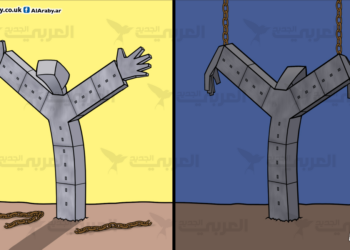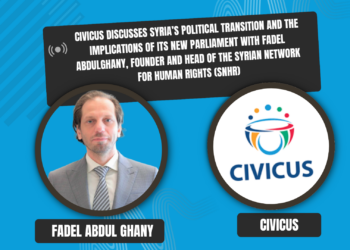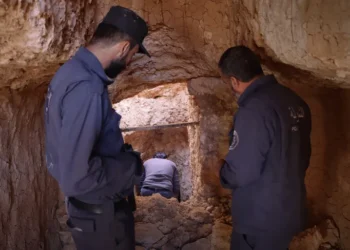Fadel Abdulghany
The relationship between peace and justice in post-conflict settlements represents one of the most problematic issues in contemporary peacebuilding. While an immediate cessation of hostilities may require practical concessions, including the exclusion of accountability mechanisms, growing evidence shows that such exclusion poses significant risks to the possibility of establishing sustainable peace. The tension between short-term conflict reduction and long-term stability is most evident when peace agreements are concluded without clear institutional inclusion of justice mechanisms. The consequences are not limited to symbolism; they extend to perpetuating past violations and perpetual lawlessness, preventing the building of credible governance institutions. Undermining the foundations of the rule of law is among the most dangerous of these outcomes. When peace settlements suggest that rules are transgressible and powerful actors are immune from accountability, a normative environment is created in which violence is accepted as a legitimate mechanism for resolving conflict. This transformation is embodied through the erosion of three dimensions of justice: legal, when the law loses its deterrent function and regulatory capacity; remedial, when victims’ rights are not recognized and they are not compensated; and distributive, when the structural imbalances that fueled the conflict are left unaddressed.
Impunity and the Dynamics of Inherited Violence Impunity creates inherited cycles of violence, rendering cessations of hostilities mere buffers between new rounds of conflict. Statistics indicate that truth commissions, when established immediately after a conflict ends, are 75% more effective in preventing the recurrence of violence; however, their exclusion from peace agreements deprives the process of this vital preventive tool. Violence is normalized as a political tool through the repetition and escalation of patterns, with the success of violence without consequences creating guiding models for subsequent political actors. This dynamic explains the frequent failure of blanket amnesties to achieve the desired peace outcomes, as the absence of deterrence keeps unlawful behavior a cost-free option.
Obstacles to Social Recovery and Challenges to International Legitimacy
Depriving victims of their rights by excluding justice mechanisms creates parallel grievances that conflict drivers exploit to reignite violence. Victims’ fundamental rights to truth, justice, reparations, and guarantees of non-recurrence are practical conditions for rebuilding society. When peace agreements ignore these rights, they hinder the formation of a collective memory necessary for societal recovery. The absence of shared narratives about the past opens the door to political manipulation of competing historical narratives, allowing groups to maintain conflicting interpretations of the causes and responsibilities of the conflict.
The disruption of collective memory formation due to the absence of truth-seeking processes thwarts opportunities to diagnose the root causes of conflict and the requirements for institutional reform. Truth commissions and their counterparts provide organized platforms for victims’ testimonies that contribute to individual healing and the building of collective recognition. However, their exclusion from peace agreements excludes these vital spaces for addressing social trauma and prevents the formulation of recommendations for institutional transformation. Similarly, the failure to establish effective frameworks for reparations perpetuates the marginalization and vulnerability of victims and leaves issues of distributive justice unaddressed, thus maintaining the structural conditions that fueled the conflict in the first place.
The risk of eroding international legitimacy is also growing in an interconnected global system where peace processes require extensive external support. UN institutional anti-amnesty policies restrict the provision of technical and financial assistance to operations that perpetuate impunity, while many bilateral donors face legal restrictions that prevent them from supporting agreements that exclude accountability mechanisms. This international dimension goes beyond material support to establish normative precedents. Every peace agreement that ignores justice contributes to undermining global accountability standards and encourages perpetrators to continue transnational violations. The weakening of international law through successive concessions on justice creates an environment conducive to future violations and weakens the entire fabric of international humanitarian law and human rights law.
Conclusion
An analysis of the risks posed by the absence of justice mechanisms in peace agreements demonstrates that the perceived tension between peace and justice reflects a fundamental misunderstanding of the requirements for sustainable conflict resolution. Evidence demonstrates that agreements devoid of justice provisions do not permanently end conflicts, but rather lead to fragile situations characterized by unaddressed grievances, weakened institutional legitimacy, and the normalization of political violence. The approximately 57% conflict recurrence rate in agreements lacking justice mechanisms, compared to much lower rates when accountability mechanisms are included, provides empirical evidence of the interconnectedness of peace and justice.
The multidimensional risks, from the legitimacy of governance and the rule of law to victims’ rights, the formation of collective memory, and international support, reveal that sustainable peace requires meaningful justice mechanisms, despite the complexities of negotiation. Creative approaches that balance immediate de-escalation requirements with long-term justice imperatives—such as deferred accountability, conditional amnesty, and hybrid models that combine restorative and retributive elements—offer paths beyond the false binary between peace and justice. The central idea is that achieving genuine, sustainable peace in Syria and elsewhere requires combining a cessation of hostilities with addressing the legacy of violence through carefully designed justice mechanisms.






